Art Fairs
Discover 6 Artists Who Impressed Curators and Collectors at the 2019 Edition of Paris Photo
Beyond the classic works on view at the mega galleries stands, there were many younger artists to discover in the Grand Palais.
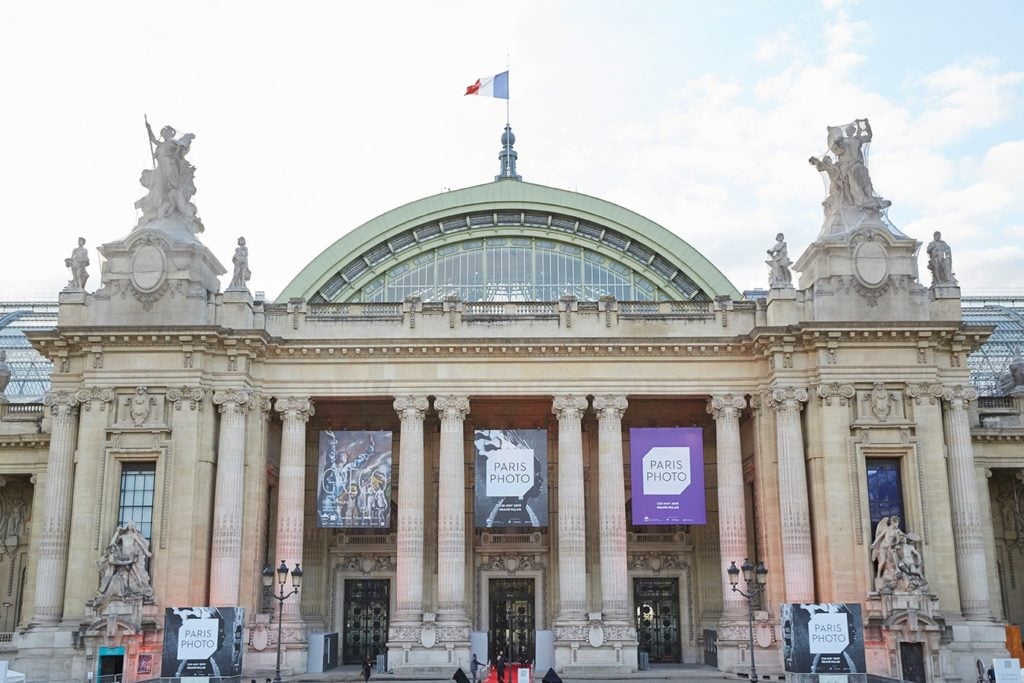
Beyond the classic works on view at the mega galleries stands, there were many younger artists to discover in the Grand Palais.

The striking thing about Paris Photo is how diverse a fair dedicated to a specific medium can be. Visitors to the fair, which closed on Sunday, November 10, found classic works by Man Ray at Gagosian; lifetime prints by August Sander at first-time participants Hauser & Wirth; and images by fashion photography giants like Helmut Newton. The German photographer’s works were among the most expensive at the fair (priced around €1.5 million or $1.6 million). But adventurous collectors could also find the latest conceptual offerings by artists who are pushing the boundaries of the medium.
Now in its 23rd edition, Paris Photo is unsurprisingly a very popular fair. France has an enduring love affair with photography, plus many of the works on sale are at relatively affordable price points. “We have faithful collectors who come from abroad not for FIAC but for Paris Photo,” says the fair’s director Florence Bourgeois, referring to last month’s contemporary art fair, which was also held in the Grand Palais. The photography fair’s director for the past five years, Bourgeois says: “A lot of Americans, and specialized collectors of photography books,” come to Photo Paris. Indeed, with its substantial section dedicated to books, the fair draws many fans because they can get photo books signed by their favorite artists. Paris Photo’s artistic director, Christoph Wiesner, says: “The market is younger but always growing.” He adds: “There’s a huge diversity within it, and it’s more affordable. [Photography] is a good entry point into collecting.”
The wealth of photography collectors in the US is the reason why the fair to trying again to establish a foothold across the Atlantic. It is launching a New York edition in April 2020, five years after it folded its Los Angeles fair. “LA was complicated, and we couldn’t reach the market,” Bourgeois says. “New York has a huge existing market for photography, there’s the photography auctions as well, and different energy around it.”
The second edition of “Curiosa,” the fair’s curated section, was organized by the British-Ghanaian curator Osei Bonsu. An expert in African contemporary art, he was recently appointed curator of international art at the Tate in London. For Paris Photo he selected 14 artists who “are asking durable and pertinent questions about photography.” He says a fair like Paris Photo can “bring things to light that are important and that might not be ready yet for institutional presentation, or might just be overlooked.”
With that in mind, here are six artists to watch:
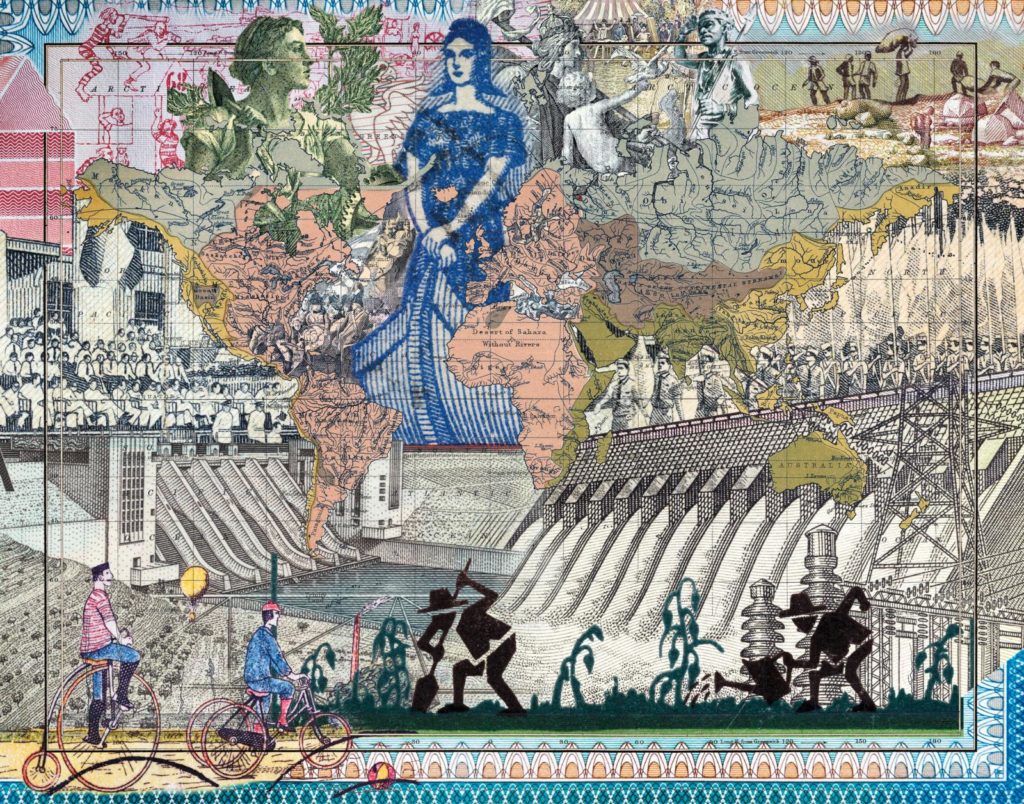
Malala Andrialavidrazana, Figures 1852, River Systems of the World, (2018). © the artist, courtesy of Caroline Smulders, Paris.
The Paris-based, Madagascar-born artist probes the connections between personal history and cultural identity, and the gap between the way in which they are perceived in the West and in so-called developing countries. In her series “Figures” (2015–ongoing), the artists uses maps as a starting point. She superimposes blown-up images from bank notes, album covers, and ethnographic engravings to create collages that challenge the visual heritage of the colonial era and its impact on our perception of the world. The works, priced at €12,000 ($13,000) were a huge hit at the fair with private collectors, curators, and institutional collections. She has shown in museums and biennials across Africa and has several shows in Europe under her belt. Expect to see more of her in 2020.
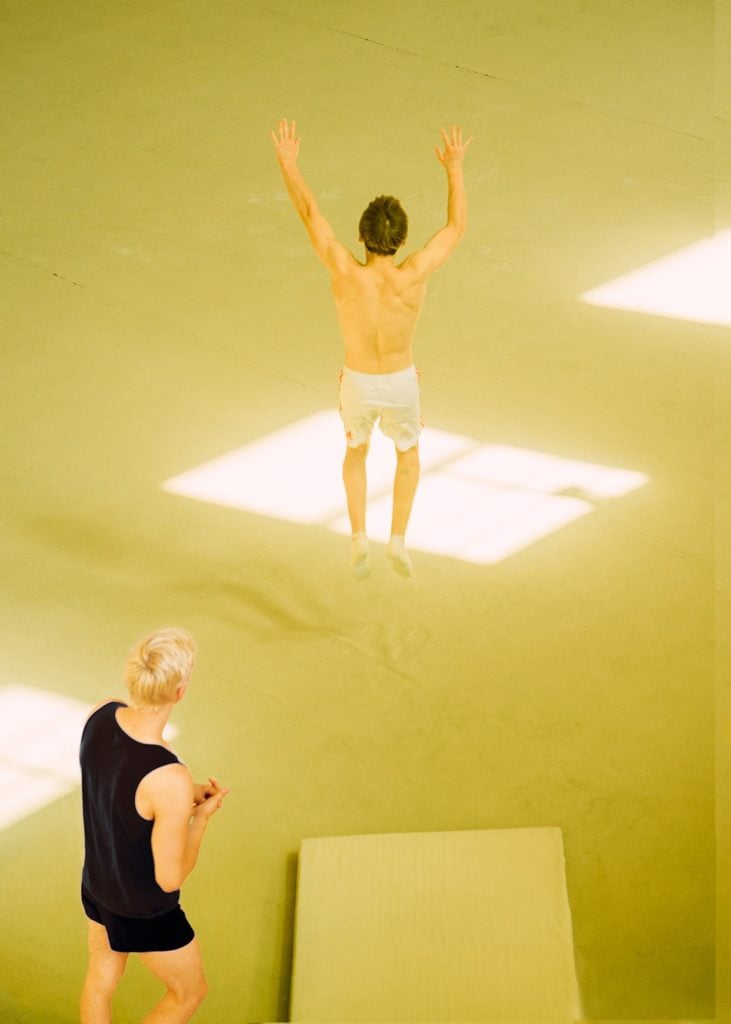
David Meskhi, Carpet sunrise 06 (2019). Courtesy of the artist and Galerie Kornfeld.
The Berlin-based, Georgian artist’s standout presentation at the “Curiosa” section is grounded in his childhood memories. His father was a sports coach in Tbilisi, in what was then a Soviet republic. Taken from unstable angles and perspectives, Meskhi’s images of the half-naked athletic bodies in brightly lit gyms are steeped in hazy homoeroticism. The competitive tension and pressure to perform are almost palpable. They also convey the camaraderie of the young athletes. Shot in the Soviet-era gyms of his youth, Meskhi’s images are hard to date; they meld memories and action, with the young subjects existing in a moment of self-concentration seemingly frozen out of time altogether. With the amount of press Meskhi’s presentation received, it is hardly surprising that several works priced €1,400 – €4,000 ($1,500 – $4,400) found buyers at the fair.
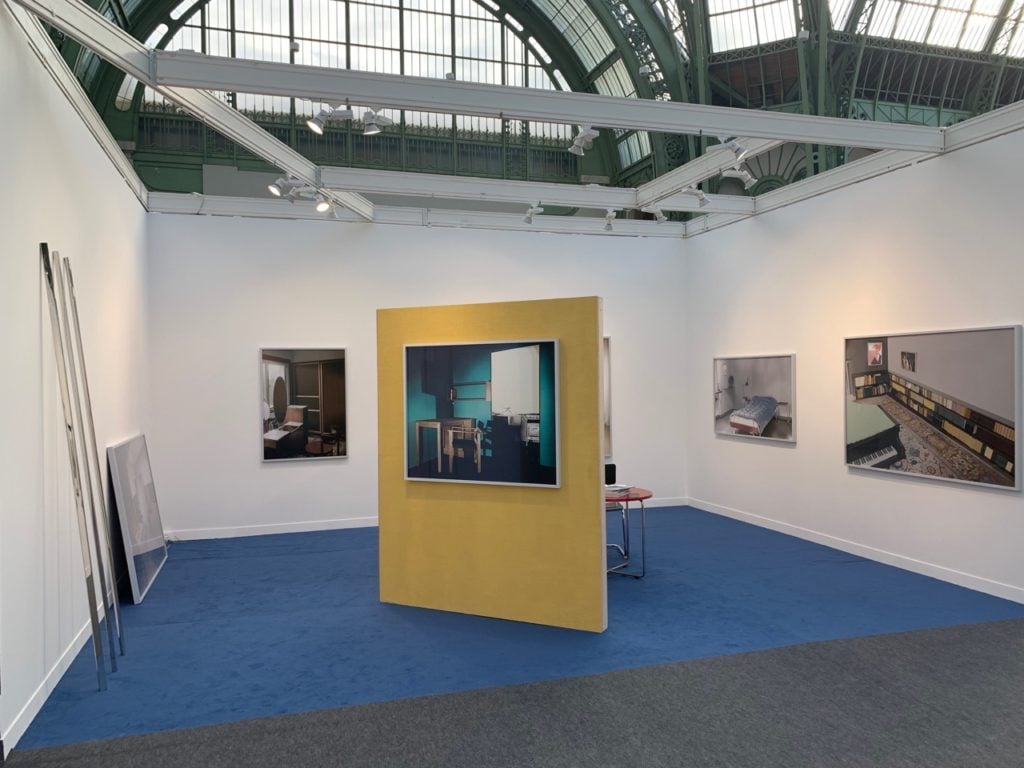
Installation view of Adrian Sauer “Raum Für Alle” at Klemm’s, Paris Photo, 2019. Courtesy the artist and Klemm’s, Berlin.
The German artist’s conceptual photography is not typically driven by a theme, so his ten-part series “Raum für Alle / Room for Everyone,” is an exception of sorts. Sauer digitally reconstructs Bauhaus living spaces based on historical photographs. Together with the architect Wilfried Kühn, the artist researched the information missing from the images, such as colors and spatial details, and the two attempted to reconstruct these lost rooms. Yet the artifice of the digital images remains to the fore; it negates the documentary value of these works and places them firmly in the realm of conceptual imagery instead. In Europe, Sauer enjoys institutional recognition. His work is found in numerous public collections, including the Centre Pompidou. Expect to see more of his work in the US soon. “The curatorial feedback on this presentation might have been the best we had in the five years since we’re doing the fair,” said gallerist Sebastian Klemm. Large-scale works range from €9,000–€14,000 ($10,000–$15,400), and smaller works were priced €2,400 ($2,600).
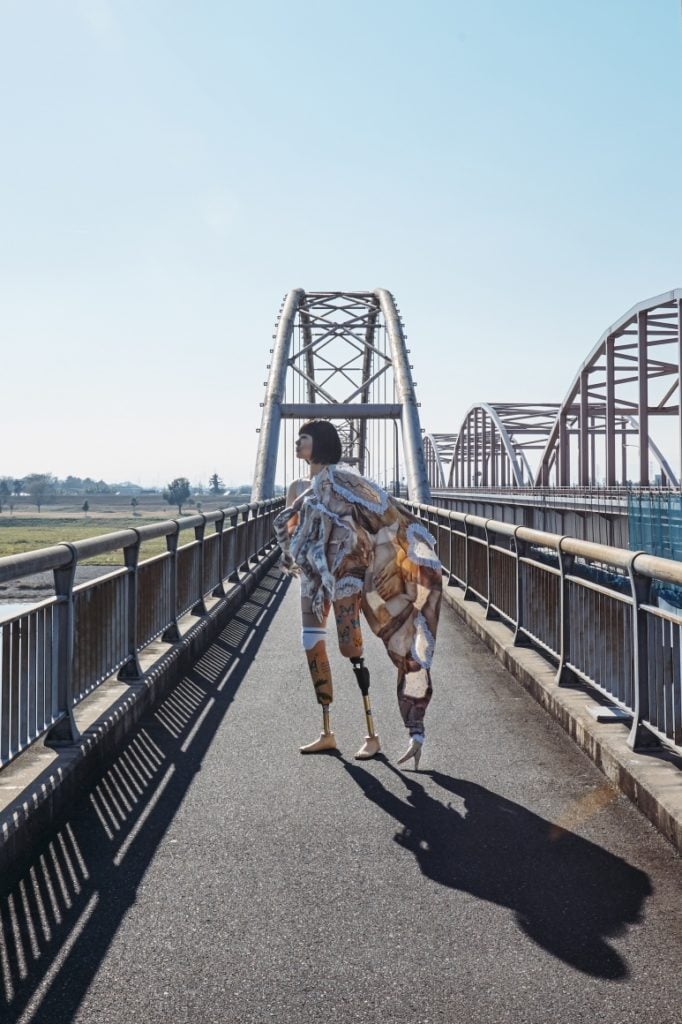
Mari Katayama, On the way home #001 (2016). Courtesy of the artist and Sage, Paris.
The Japanese artist’s striking self-portraits are one of the highlights of this year’s Venice Biennale. Born with a rare physical condition and with only two fingers on her left hand, Katayama chose to have he legs amputated when she was only a child. In her work, she transcends the challenges her differently abled body poses, physically and socially, casting herself as a living sculpture. The undeniable beauty of her images stems from the breadth of emotions they convey. But her photography was first secondary to her practice as a sculptor; she initially only picked up the camera to demonstrate the purposes of her soft sculptures. Stuffed with hair, lace, and seashells, the wearable textile works become extensions of her identity, and vestiges of her childhood isolation. Katayama decorates the frames of photographs by hand, so that each work is unique. With prices ranging between €3,500–€18,000 ($3,900–$20,000), it comes as no surprise that the fair has been “very good” as gallerist Francois Sage put it, adding that pieces were placed with public institutions as well as European and American collectors.
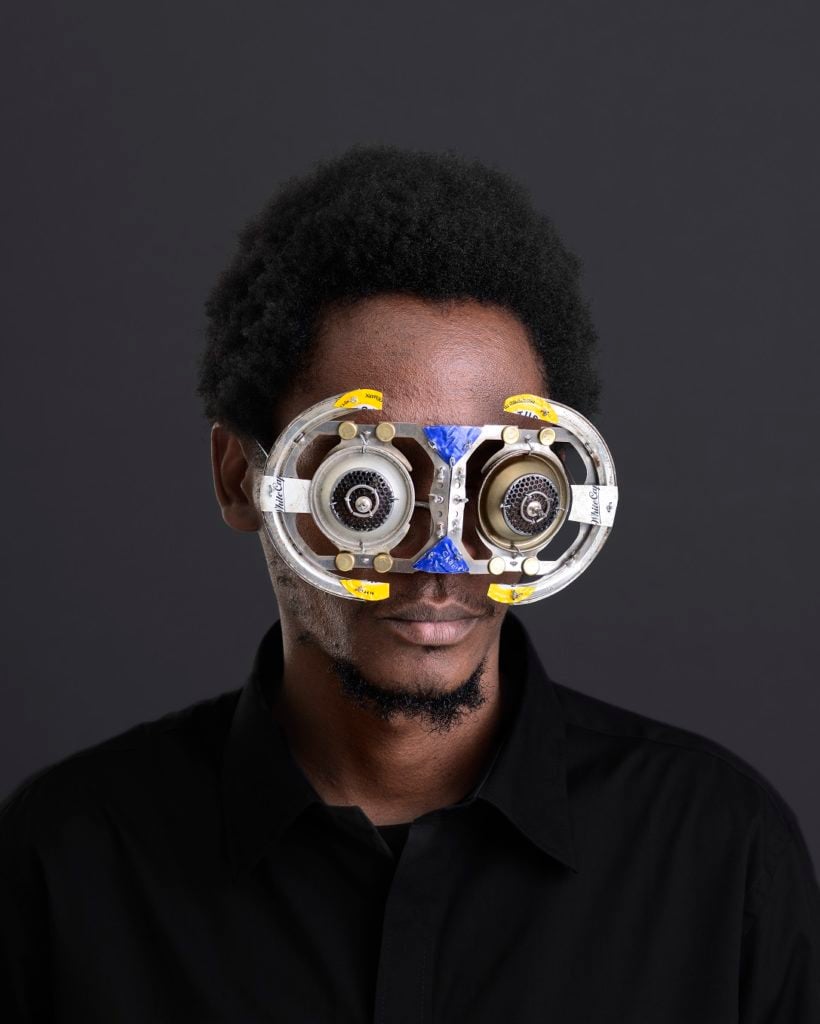
Cyrus Kabiru, Njia Ya Maisha, Macho Nne – Maona Chum (2016_. Courtesy of the artist and Braverman Gallery, Tel Aviv.
Cyrus Kabiru’s ongoing series “C-STUNNERS” consists of self-portraits showing the Kenyan artist wearing his sculptural bifocals. Borrowing from the language of fashion photography, the self-portraits speak of ambiguity, mimicking aspirational product photography and channeling the ingenuity and resourcefulness of Nairobi’s youth. The artist has been shown in the 2018 Kochi-Muziris Biennale in India, and in museums across Africa and Europe. Priced between €4,000–€6,000 ($4,400–$6,600) his works are now being snapped up by American collectors.
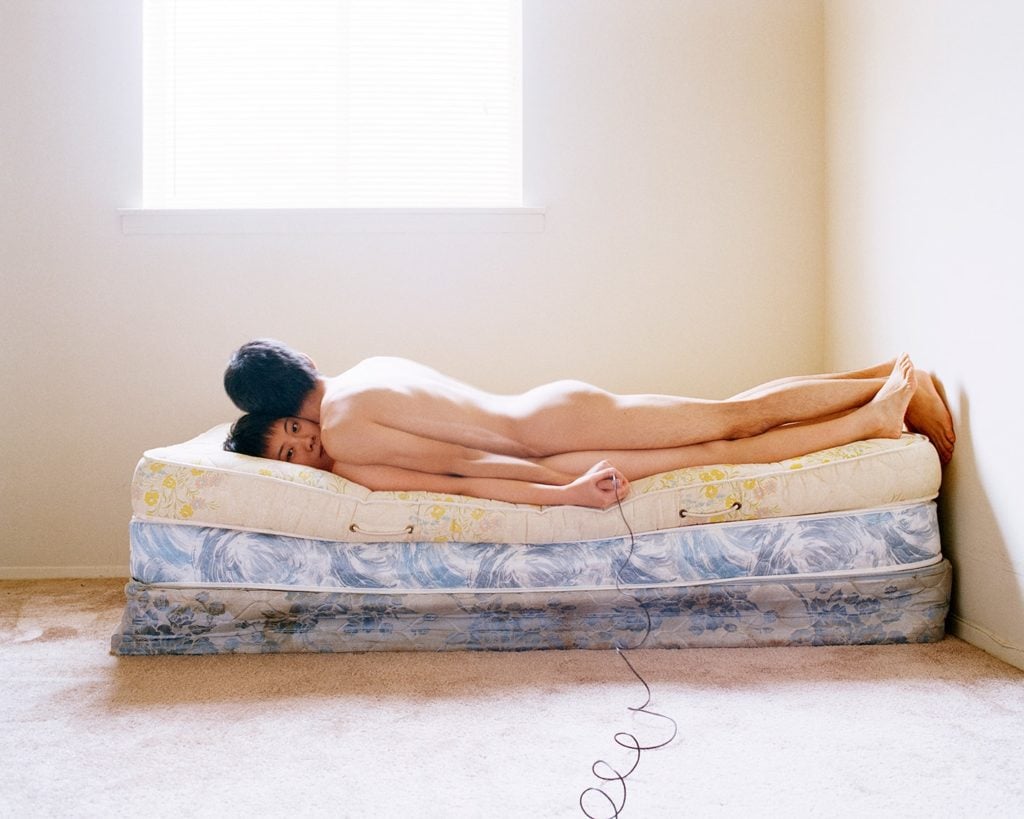
Pixy Liao, How to build a relationship with layered meanings (2008). Courtesy of the artist and Blindspot Gallery.
The New-York based Chinese artist works with photography, installation, and performance, often combining the three, as in her series “Experimental Relationship” (2007–ongoing), which she creates with her Japanese boyfriend and muse, Moro. In the staged situations, the artist challenges gender roles and unpacks the tensions between the public and private life of couples in a deadpan manner. Her presentation at Paris Photo comes hot on the heels of her solo show this summer at Rencontre d’Arles, Europe’s most important photography festival. At Paris Photo the artist’s prices ranged from €2,600–€5,000 ($2,700–$5,500).